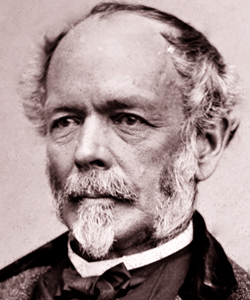 The Battle of Kennesaw Mountain took place on June 27, 1864 in Cobb county, Georgia when General William T. Sherman ordered his forces to attack General Joseph E. Johnston’s Army of Tennessee. Sherman, who was unable to dislodge Johnston’s men, was forced to withdraw later that day. Some estimates put the number of total casualties at 4,000 (3,000 Union, 1,00 CSA). Teachers will find several resources on the National Park Service’s site, including a short overview of the battle and a Google Earth Tour. This viritual tour shows the location of the Confederate and Union forces on the battlefield as well as hiking and horse trails. The Library of Congress also has some resources , including several sketches by Alfred R. Waud and several maps of General Sherman’s Atlanta Campaign. In addition, Google Books has several interesting accounts of the battle. William Chamberlin, who served with the Ohio Infantry Volunteers, decribed the impact on his regiment:
The Battle of Kennesaw Mountain took place on June 27, 1864 in Cobb county, Georgia when General William T. Sherman ordered his forces to attack General Joseph E. Johnston’s Army of Tennessee. Sherman, who was unable to dislodge Johnston’s men, was forced to withdraw later that day. Some estimates put the number of total casualties at 4,000 (3,000 Union, 1,00 CSA). Teachers will find several resources on the National Park Service’s site, including a short overview of the battle and a Google Earth Tour. This viritual tour shows the location of the Confederate and Union forces on the battlefield as well as hiking and horse trails. The Library of Congress also has some resources , including several sketches by Alfred R. Waud and several maps of General Sherman’s Atlanta Campaign. In addition, Google Books has several interesting accounts of the battle. William Chamberlin, who served with the Ohio Infantry Volunteers, decribed the impact on his regiment:
“Kennesaw Mountain! What soldier who saw it during these days will ever forget its fiery flaming brow? Into how many households does the name bring the gushing tears of sorrow for the loved one whose spark of life went out before that death-dealing giant of Nature? Kennesaw Mountain held Sherman’s army at bay fourteen days during which the loss in killed and wounded was greater than at any previous part of the campaign.”
Lieutenant Warren, who served in the Missouri Confederate Brigade, described the “poor fellows” in the “solid line of blue” whose attack was repulsed. One can find other primary sources related to this battle in Cornell University’s Making of America, including General Johnston’s account and other reports in the Official Records.








Related Articles
No user responded in this post
Leave A Reply
Please Note: Comment moderation maybe active so there is no need to resubmit your comments